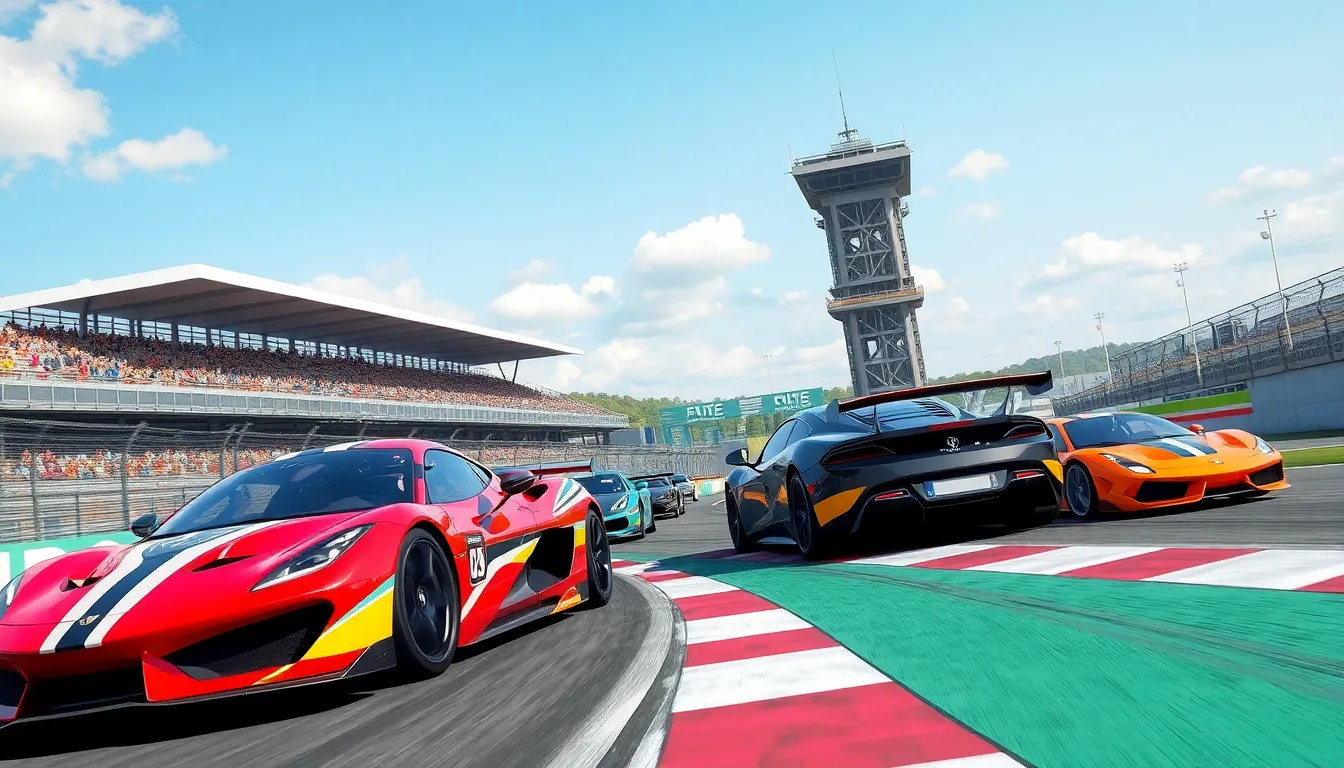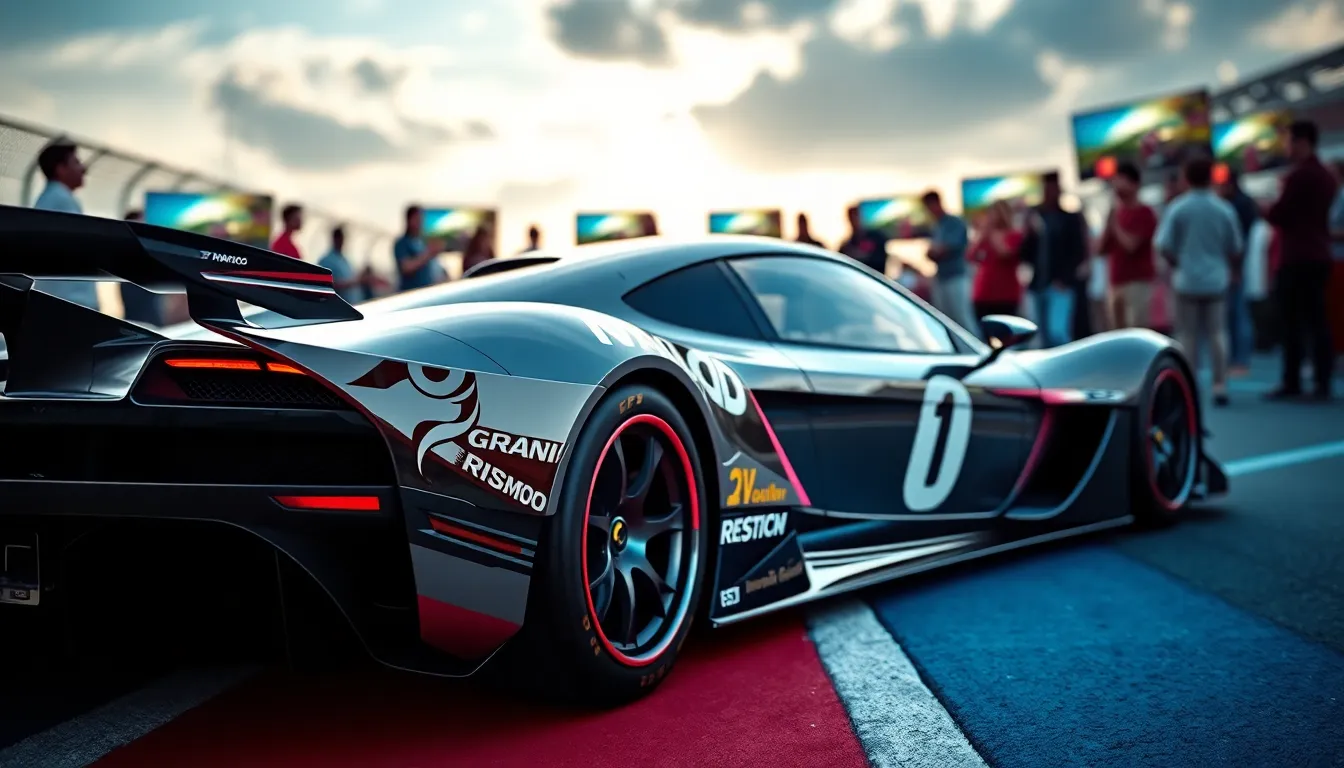In the fast-paced world of racing games, Gran Turismo has long been a favorite for gearheads and casual gamers alike. But as players zoom around the tracks, a new pit stop has emerged that’s causing quite a stir: microtransactions. Imagine revving your engine only to find that your dream car is just a few bucks away—if you’re willing to fork over some extra cash, that is.
While some racers embrace these digital shortcuts, others feel like they’re being taken for a ride. Are these microtransactions a clever way to enhance the experience or just a sneaky way to drain players’ wallets? Buckle up as we dive into the nitty-gritty of Gran Turismo’s microtransaction landscape, where speed meets strategy and wallets are put to the test.
Table of Contents
ToggleOverview Of Gran Turismo Microtransactions
Gran Turismo microtransactions enable players to purchase in-game currency and vehicles using real money. Players can select from various options, including premium cars and upgrades. Some appreciate this system for streamlining gameplay and quickly attaining desired vehicles. Others criticize it as a way to exploit dedicated players, suggesting it undermines the core experience.
In 2023, Gran Turismo 7 introduced multiple pricing tiers for microtransactions, offering flexibility in purchasing vehicles. A common price point for cars is around $1.99 for lower-tier options, while premium cars can reach up to $19.99. This pricing strategy sparks debate among fans regarding fairness and equality in access to vehicles.
Gameplay experience may vary based on whether players choose to engage with microtransactions. Gamers who opt not to spend money often find their progression slower. Consequently, it can create a divide between those willing to invest money and those adhering to traditional gameplay methods. Reports indicate a mixed reaction, with some players enjoying the swift access to high-performance cars.
Critics highlight the impact of microtransactions on player satisfaction. Many argue that they shift focus from skill development to a pay-for-play model, which could deter newcomers. The ongoing discussion emphasizes a crucial point: do microtransactions enrich the game or compromise its integrity? The debate continues as the community assesses the long-term implications for Gran Turismo.
Impact On Gameplay Experience

Gran Turismo microtransactions significantly shape the gameplay experience for players. Players respond to these options in various ways, which influences their overall satisfaction and engagement with the game.
Positive Aspects
Purchasing in-game items can enhance player enjoyment. Immediate access to premium cars allows players to explore advanced options without grinding for credits. This convenience appeals to those short on time, facilitating quicker participation in high-level competitions. Additionally, microtransactions enable players to customize their cars, creating a unique racing identity. Streamlined gameplay, achieved through these purchases, attracts players who desire a tailored experience. Enhanced vehicles often lead to improved performance, providing a rewarding sense of achievement for those who invest in them.
Negative Aspects
A divide exists between players due to microtransactions. Some gamers feel pressured to spend money to compete effectively, creating an uneven playing field. Skill development becomes less important when financial investment can yield an advantage. Critics argue that this system encourages a pay-to-win mentality, discouraging new players from fully engaging with the game. Long-term satisfaction suffers as individuals may feel disconnected from the essence of racing, which traditionally emphasizes skill and strategy. Exploiting opportunities through real-money purchases can overshadow the joy of earning rewards through gameplay, diluting the overall experience.
Community Reactions
Mixed reactions from the Gran Turismo community highlight the diverse perspectives on microtransactions. Some players embrace these features for the convenience they offer, while others express strong discontent over their perceived unfairness.
Feedback From Players
Players consistently share their thoughts through social media and reviews. Many appreciate the ability to quickly acquire desired cars, finding value in this convenience. Others criticize the model as a paywall, arguing that it makes it difficult for players who don’t spend money to keep up. Frustration emerges when skill feels overshadowed by financial investment. The imbalance leads to a call for a more equitable system, with voices advocating for alternative means of earning cars without monetary expenditure. Responses reveal a clear divide among enthusiasts, with passionate debates shaping the conversation around microtransactions.
Influence On Online Forums
Online forums serve as major outlets for player discussion and analysis. Prominent threads focus on strategies regarding microtransactions and their implications for gameplay. Some forum members share tips on how to navigate the system without overspending. Others voice concerns about community engagement, suggesting that microtransactions create a divide that diminishes unity among players. Posts discussing experiences with in-game challenges show a blend of support and criticism. Players often provide insights into how spending habits impact performance in races and overall enjoyment. These discussions play a critical role in assessing the broader impact of microtransactions on Gran Turismo’s community dynamics.
Comparison With Other Racing Games
Microtransactions in Gran Turismo evoke comparisons to similar features in other racing games. This section examines different models and levels of player satisfaction across the genre.
Microtransaction Models In Competitors
Many racing games, such as Forza Horizon and Need for Speed, utilize unique microtransaction models. Forza Horizon 5 offers both cosmetic items and vehicles that can be earned through gameplay or purchased for real currency. Need for Speed relies on a similar approach with in-game currency usable for various upgrades and cars. Gran Turismo 7’s pricing structure, which ranges from $1.99 to $19.99 for cars, positions it differently compared to competitors. Some games also provide battle passes, enabling players to unlock cars and upgrades over time through challenges. This variety illustrates how approaches to microtransactions shape player experiences across different titles in the racing genre.
Player Satisfaction Levels
Player satisfaction levels reflect varied reactions to microtransaction practices in racing games. A survey conducted among Gran Turismo players highlights a split: 60% appreciate the convenience while 40% express frustration over perceived unfair advantages. In contrast, Forza Horizon players tend to report higher satisfaction due to the ability to earn content through gameplay. Those engaging with Need for Speed often feel similarly divided, with some disapproving of the pay-to-win sentiment that microtransactions can create. Balancing the excitement of instant access to premium items against concerns over fairness contributes to this ongoing discourse among racing game enthusiasts.
Future of Gran Turismo Microtransactions
Players expect Gran Turismo’s microtransaction model to evolve. Game developers may introduce updates based on community feedback. Continued concerns over fairness and accessibility significantly influence potential changes.
Microtransactions could see pricing adjustments. Current car prices range from $1.99 to $19.99, causing players to question the overall value. Developers might consider refining this system to balance player satisfaction while maintaining revenue streams.
Community sentiment can drive future decisions. The 60% of players appreciating convenience highlight a demand for accessible options. Conversely, the 40% expressing frustration reveal clear discontent, underscoring the need for adjustments.
Competition within the racing genre may inspire innovation. Gran Turismo may consider adopting features seen in Forza Horizon 5, where players earn cosmetic items through gameplay. These changes could enhance player engagement and overall experience.
Developers might also explore ways to encourage skill development. A focus on rewarding players for in-game achievements can shift the narrative away from pay-to-win models. Emphasizing skill over expenditure can create a fairer competitive environment.
Long-term implications warrant ongoing assessments. Continuous player discussions on forums provide valuable insights into community desires. Monitoring player reactions will be critical as Gran Turismo navigates its microtransaction future.
Ultimately, the trajectory of microtransactions will determine the series’ standing in the gaming community. Changes made in response to player feedback could foster a more inclusive atmosphere while maintaining profitability.
The debate surrounding Gran Turismo microtransactions continues to shape player experiences and community dynamics. As opinions remain divided between convenience and fairness, the future of the series hinges on how developers respond to player feedback.
Adjustments to the microtransaction model could lead to a more balanced and engaging environment, fostering satisfaction among both spending and non-spending players. By prioritizing skill development and rewarding gameplay, Gran Turismo has the potential to reclaim its essence and enhance the overall racing experience.
As the conversation evolves, the impact of these changes will likely define the series’ legacy in the competitive gaming landscape.



